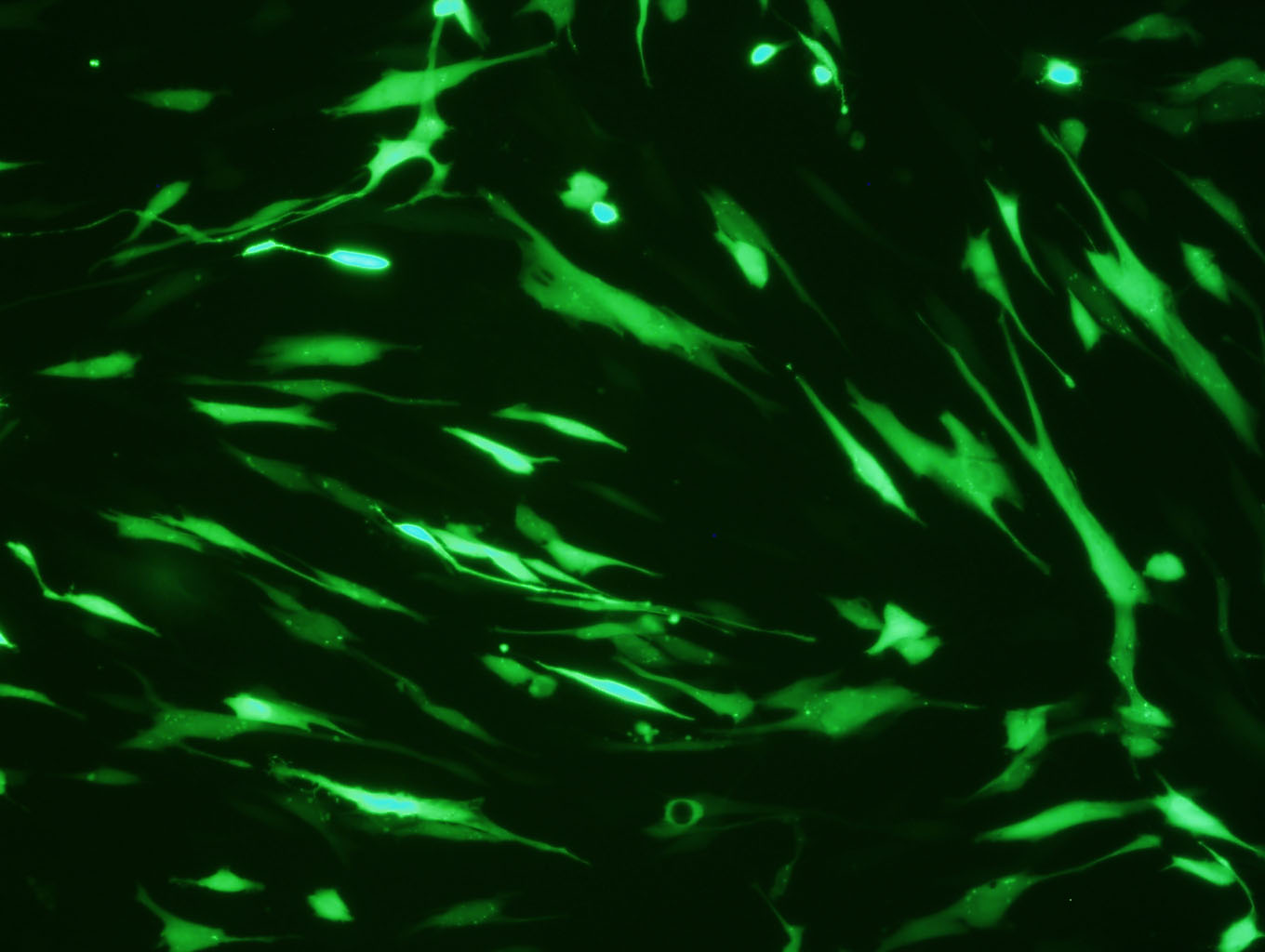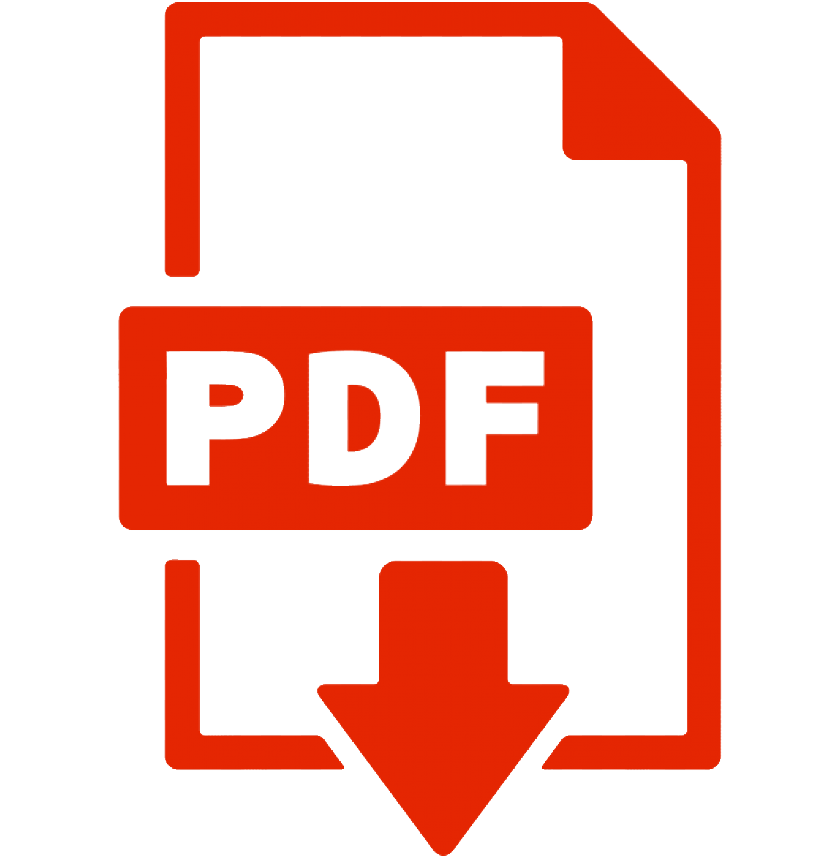Description
Cell to transfect:
Cell Name: Human Lung Fibroblast (HLF, NHLF)
Cell Synonyms: HLF, NHLF
Lung fibroblasts play an important role in airway inflammation and airway remodeling. Human Lung Fibroblast (HLF) has been used as an important tool for medical and pharmaceutical studies. For examples: HLF can be a target for asthma medications in pharmaceutical development; Fibroblast -based assay was used for screening of new antimicrobial drugs; Human cytomegalovirus (HCMV) was found to completely down-regulate EGF receptor on the surface of fetal HLF; Pseudomonas autoinducer N-(3-oxododecanoyl) homoserine lactone induces cyclooxygenase-2 and prostaglandin E2 production in HLF important for inflammation and immune defenses; Studies also show cigarette smoke extract added to the medium induces growth inhibition of HLF.
The Transfection Reagent Features:
- Broad spectrum for the transfection of large plasmid, mRNA, siRNA, and/or other type of nucleic acids, which is best for co-transfection of different type and/or size of nucleic acids.
- Specifically optimized to deliver nucleic acids into HLF
- Highest efficiency to ensure experimental success
- Extremely gentle to cells
- 0.5 ml is able to transfect about 1000 wells of 24-well plate
- Deliver single or multiple plasmids
- Synthesized from 100% animal origin-free components, making it easy to validate the absence of zoonotic diseases, such as BSE or viruses, in research experiments or cells lines
- Compatible with serum
- Compatible with transfection in any plate formats
- Economical: High efficiency means less amount of nucleic acid & reagent is needed
- Developed and manufactured by EZ Biosystems
Data
 FIG. 1. High throughput test of transfection efficiency (determined as RLU/mg) on human dermal fibroblasts after transfection of luciferase reporter gene by using our 172 proprietary transfection formulas and several most popular commercial transfection reagents. The yellow box showed the results of 4 commercial transfection reagents. The red lines marked our candidate formulas with the highest transfection efficiency for human dermal fibroblasts. This test result was confirmed with repeat experiments. The candidate formulas were also tested in human lung fibroblasts by tranfecting GFP expression plasmid, and got the same high transfection efficiency after flow cytometry analysis. The one that showed the optimal balance of potent & low cytotoxicity (percentage of 7AAD positive cells) among those candidate formulas was later named as Human Lung Fibroblast Avalanche Transfection Reagent.
FIG. 1. High throughput test of transfection efficiency (determined as RLU/mg) on human dermal fibroblasts after transfection of luciferase reporter gene by using our 172 proprietary transfection formulas and several most popular commercial transfection reagents. The yellow box showed the results of 4 commercial transfection reagents. The red lines marked our candidate formulas with the highest transfection efficiency for human dermal fibroblasts. This test result was confirmed with repeat experiments. The candidate formulas were also tested in human lung fibroblasts by tranfecting GFP expression plasmid, and got the same high transfection efficiency after flow cytometry analysis. The one that showed the optimal balance of potent & low cytotoxicity (percentage of 7AAD positive cells) among those candidate formulas was later named as Human Lung Fibroblast Avalanche Transfection Reagent.

FIG. 2. Human Lung Fibroblasts were transfected with GFP vector (pEGFP-N3) by using Human Lung Fibroblast Avalanche® Transfection Reagent. The cells were visualized by Nikon Eclipse Fluorescence microscope 24 hours post transfection.
For Other Cells
Human Lung Fibroblast (HLF, NHLF) Avalanche® Transfection Reagent can also be used on the following cells with high transfection efficiencies.
BALB/3T3 clone A31
3T3-Swiss albino Cell
CT26.WT Cell
786-O Cell
Caki-1 Cell
MDCK Cell
Vero Cell
293 Cell
293T/17 Cell
Recommended protocols for these cells will be provided with the reagent. The protocols usually provide satisfactory transfection efficiency with invisible cytotoxicity. However, optimization may be needed for certain type of cells. Optimizations may include: the amount of DNA and this transfection reagent; cell density; transfection reagent/DNA ratio, or incubation time for the mixture of transfection reagent/DNA etc. For best transfection result, we recommend using the respective cell type/cell line specific Avalanche transfection reagents. Those reagents have been optimized on both recipes and protocols, and have been proved to have the best transfection results for the respective cell lines or primary cells. You can easily find the respective Avalanche transfection reagents specific for your cells by using the filters of our product list.
Additional Information
| Weight |
0.5 lbs |
| Adherence Phenotype |
Adherent |
| Cell Type |
Fibroblast |
| Disease |
Healthy |
| Names starting from |
H |
| Primary/Cell Line |
Primary Cell |
| Product Sizes |
0.5 ml, 1.5 ml |
| Species |
Human |
| Tissue Sources |
Lung |
| Subcategories |
Cell Type/Cell Line Specific |
Documents
Protocols

EZT-HLF0-1 Protocol.
MSDS

EZT-HLF0-1 MSDS
Citations or Feedback

Description
Cell to transfect:
Cell Name: Human Lung Fibroblast (HLF, NHLF)
Cell Synonyms: HLF, NHLF
Lung fibroblasts play an important role in airway inflammation and airway remodeling. Human Lung Fibroblast (HLF) has been used as an important tool for medical and pharmaceutical studies. For examples: HLF can be a target for asthma medications in pharmaceutical development; Fibroblast -based assay was used for screening of new antimicrobial drugs; Human cytomegalovirus (HCMV) was found to completely down-regulate EGF receptor on the surface of fetal HLF; Pseudomonas autoinducer N-(3-oxododecanoyl) homoserine lactone induces cyclooxygenase-2 and prostaglandin E2 production in HLF important for inflammation and immune defenses; Studies also show cigarette smoke extract added to the medium induces growth inhibition of HLF.
The Transfection Reagent Features:
- Broad spectrum for the transfection of large plasmid, mRNA, siRNA, and/or other type of nucleic acids, which is best for co-transfection of different type and/or size of nucleic acids.
- Specifically optimized to deliver nucleic acids into HLF
- Highest efficiency to ensure experimental success
- Extremely gentle to cells
- 0.5 ml is able to transfect about 1000 wells of 24-well plate
- Deliver single or multiple plasmids
- Synthesized from 100% animal origin-free components, making it easy to validate the absence of zoonotic diseases, such as BSE or viruses, in research experiments or cells lines
- Compatible with serum
- Compatible with transfection in any plate formats
- Economical: High efficiency means less amount of nucleic acid & reagent is needed
- Developed and manufactured by EZ Biosystems
Data
 FIG. 1. High throughput test of transfection efficiency (determined as RLU/mg) on human dermal fibroblasts after transfection of luciferase reporter gene by using our 172 proprietary transfection formulas and several most popular commercial transfection reagents. The yellow box showed the results of 4 commercial transfection reagents. The red lines marked our candidate formulas with the highest transfection efficiency for human dermal fibroblasts. This test result was confirmed with repeat experiments. The candidate formulas were also tested in human lung fibroblasts by tranfecting GFP expression plasmid, and got the same high transfection efficiency after flow cytometry analysis. The one that showed the optimal balance of potent & low cytotoxicity (percentage of 7AAD positive cells) among those candidate formulas was later named as Human Lung Fibroblast Avalanche Transfection Reagent.
FIG. 1. High throughput test of transfection efficiency (determined as RLU/mg) on human dermal fibroblasts after transfection of luciferase reporter gene by using our 172 proprietary transfection formulas and several most popular commercial transfection reagents. The yellow box showed the results of 4 commercial transfection reagents. The red lines marked our candidate formulas with the highest transfection efficiency for human dermal fibroblasts. This test result was confirmed with repeat experiments. The candidate formulas were also tested in human lung fibroblasts by tranfecting GFP expression plasmid, and got the same high transfection efficiency after flow cytometry analysis. The one that showed the optimal balance of potent & low cytotoxicity (percentage of 7AAD positive cells) among those candidate formulas was later named as Human Lung Fibroblast Avalanche Transfection Reagent.

FIG. 2. Human Lung Fibroblasts were transfected with GFP vector (pEGFP-N3) by using Human Lung Fibroblast Avalanche® Transfection Reagent. The cells were visualized by Nikon Eclipse Fluorescence microscope 24 hours post transfection.
For Other Cells
Human Lung Fibroblast (HLF, NHLF) Avalanche® Transfection Reagent can also be used on the following cells with high transfection efficiencies.
BALB/3T3 clone A31
3T3-Swiss albino Cell
CT26.WT Cell
786-O Cell
Caki-1 Cell
MDCK Cell
Vero Cell
293 Cell
293T/17 Cell
Recommended protocols for these cells will be provided with the reagent. The protocols usually provide satisfactory transfection efficiency with invisible cytotoxicity. However, optimization may be needed for certain type of cells. Optimizations may include: the amount of DNA and this transfection reagent; cell density; transfection reagent/DNA ratio, or incubation time for the mixture of transfection reagent/DNA etc. For best transfection result, we recommend using the respective cell type/cell line specific Avalanche transfection reagents. Those reagents have been optimized on both recipes and protocols, and have been proved to have the best transfection results for the respective cell lines or primary cells. You can easily find the respective Avalanche transfection reagents specific for your cells by using the filters of our product list.
Additional Information
| Weight |
0.5 lbs |
| Adherence Phenotype |
Adherent |
| Cell Type |
Fibroblast |
| Disease |
Healthy |
| Names starting from |
H |
| Primary/Cell Line |
Primary Cell |
| Product Sizes |
0.5 ml, 1.5 ml |
| Species |
Human |
| Tissue Sources |
Lung |
| Subcategories |
Cell Type/Cell Line Specific |
Documents
Protocols

EZT-HLF0-1 Protocol.
MSDS

EZT-HLF0-1 MSDS
Citations or Feedback

 FIG. 1. High throughput test of transfection efficiency (determined as RLU/mg) on human dermal fibroblasts after transfection of luciferase reporter gene by using our 172 proprietary transfection formulas and several most popular commercial transfection reagents. The yellow box showed the results of 4 commercial transfection reagents. The red lines marked our candidate formulas with the highest transfection efficiency for human dermal fibroblasts. This test result was confirmed with repeat experiments. The candidate formulas were also tested in human lung fibroblasts by tranfecting GFP expression plasmid, and got the same high transfection efficiency after flow cytometry analysis. The one that showed the optimal balance of potent & low cytotoxicity (percentage of 7AAD positive cells) among those candidate formulas was later named as Human Lung Fibroblast Avalanche Transfection Reagent.
FIG. 1. High throughput test of transfection efficiency (determined as RLU/mg) on human dermal fibroblasts after transfection of luciferase reporter gene by using our 172 proprietary transfection formulas and several most popular commercial transfection reagents. The yellow box showed the results of 4 commercial transfection reagents. The red lines marked our candidate formulas with the highest transfection efficiency for human dermal fibroblasts. This test result was confirmed with repeat experiments. The candidate formulas were also tested in human lung fibroblasts by tranfecting GFP expression plasmid, and got the same high transfection efficiency after flow cytometry analysis. The one that showed the optimal balance of potent & low cytotoxicity (percentage of 7AAD positive cells) among those candidate formulas was later named as Human Lung Fibroblast Avalanche Transfection Reagent.


